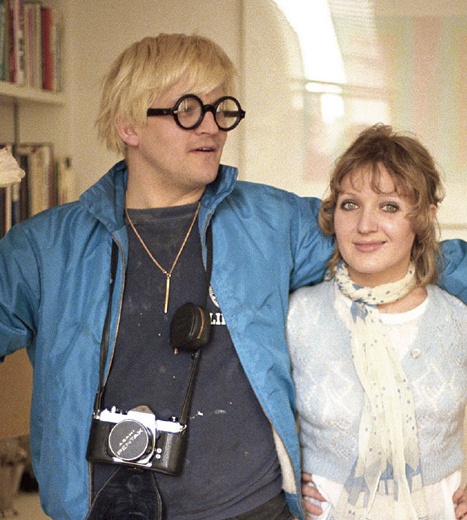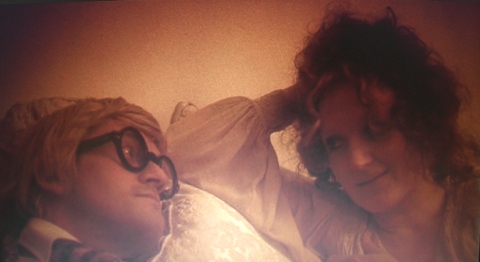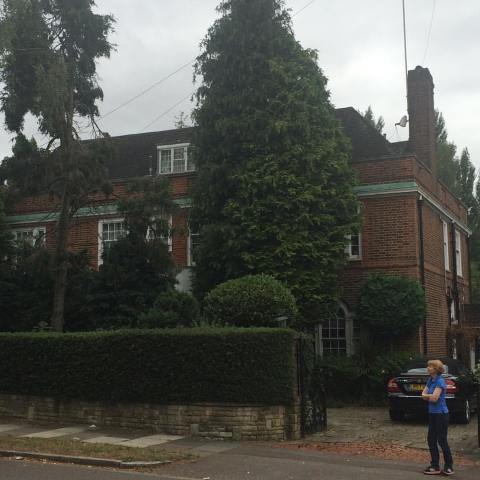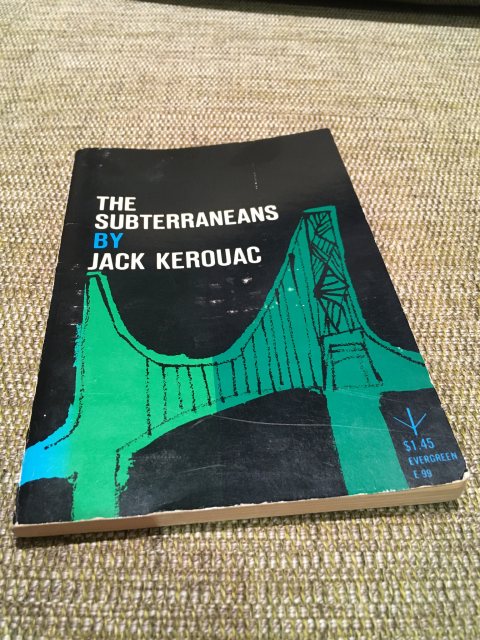Archive for February, 2017|Monthly archive page
4 reasons to go watch ‘Taxi Driver’

Just back from watching ‘Taxi Driver’ for the first time in years, on the big screen at the National Film Theatre, London. The latest sortie in an on-going campaign to expose the Enfants Terribles to the best of 70s cinema – from ‘The Godfather’ via ‘Serpico’ to ‘Chinatown’. And this the day after bumping into Martin Scorsese on the mean streets of London.

1. The Beginning

As the shark-monster wing of the yellow New York cab emerges from the cloud of steam to the epic music of Bernard Herrmann (to whom Scorsese’s 1976 masterpiece is dedicated) we know this vehicle is more than a jaundiced automobile – it will take us from here (a neon-lit metropolis littered with sin and evil goings-on) to there (a patient study in alienation and trying to do right but failing in an oh so human way) for a few dollars but we’ll leave the slick pavement on the journey and transcend to higher places (including a climactic moment in which we float over the ultimately murderous outcome across the ceiling of the blood-spattered room in a bold overhead shot). This film is blood red like the Technicolor crimson lipstick in ‘Black Narcissus’ which Scorsese so admires, like Powell & Pressburger’s ‘Red Shoes’, like the blood of Christ and the neon in the city night.

2. The Acting
DeNiro, the year after his triumph in ‘The Godfather II’, brilliantly conveys the building total exhaustion of a man who can’t sleep despite 12 hour overnight shifts in the cab. His eyes gradually darken as does his outlook. Returned from Vietnam, wounded in body and mind – all shown and not told (scars on his back, his named combat uniform, Nam references in a political speech) – Travis Bickle tries desperately to get back in touch with the world but his 26-year old head just isn’t there. He reaches out to presidential campaigner Betsy (Cybill Shepherd) but can’t remember why taking her out to a porn movie on a date might not be right. He tries to engage the kiosk girl in a porno cinema to no avail, foreshadowing the failed date as well as spotlighting a painful innocence. DeNiro’s performance is a patient portrait of isolation and aloneness. When we first see him in the brilliant revelation of his radical Mohican haircut in a tilt up from his hands opening a bottle of pills, up his combat fatigues, past his We Are The People badge, to reveal his final descent to animalistic warrior basics, he is standing alone at the edge of a crowd.

That strange smirk
3. The Writing
Paul Schrader’s script is full of classic lines, as epic and resonant as Herrmann’s score. The biblical passage near the front about washing all the filth off the city streets – Manhattan as Nineveh (which has an added dimension in that Nineveh is now Mosul and Mosul is now being cleansed of IS animalistic psycho-warriors) – is masterful.
May 10th. Thank God for the rain which has helped wash away the garbage and trash off the sidewalks. I’m workin’ long hours now, six in the afternoon to six in the morning. Sometimes even eight in the morning, six days a week. Sometimes seven days a week. It’s a long hustle but it keeps me real busy. I can take in three, three fifty a week. Sometimes even more when I do it off the meter. All the animals come out at night – whores, skunk pussies, buggers, queens, fairies, dopers, junkies, sick, venal. Someday a real rain will come and wash all this scum off the streets. I go all over. I take people to the Bronx, Brooklyn, I take ’em to Harlem. I don’t care. Don’t make no difference to me. It does to some. Some won’t even take spooks. Don’t make no difference to me.

I can’t quite look at this shit
4. The Ending
The romantic shot towards the end of Betsy, framed in the taxi rearview mirror, surrounded by soft-focus glittering city lights, is literally a rear view, a coma fantasy drawn from a more promising time. The sounds of the hospital life-support machines subtly playing in the background (at least that’s how I read it). The sound design is fabulous throughout, many grim scenes of guns and prostitution underlaid with the shouts and play of children in the city streets. The Betsy in rearview mirror shot was referenced by John Mackenzie in the ending of ‘The Long Good Friday’ four years after this movie – in that case a young Pierce Brosnan fixing a resigned Harold/Bob Hoskins in the reflection. There Harold Shand is being driven off to his death. In the last moments of ‘Taxi Driver’ it is a comatose Travis Bickle who pulls away in his taxi from his dream of love and connection (in the fantasised form of Betsy) and drives off on his own to his own death and fade to black, leaving us with a powerful sense of wasted human potential, the urge to do right, to help, to save, to connect, to reach out, which somehow goes wrong…

I got some good ideas in my head after the inspiration of watching such a flawless film. It has just been re-released in the UK to mark its 40th anniversary.

Teetering on the edge

Jodie Foster, just 14 at the time, yet such a mature performance

Sport: “You’re a funny guy.” – tees up another classic Scorsese scene 14 years later: “It’s a good story, it’s funny, you’re a funny guy.” (Goodfellas)

Object of desire
Coincidence No.389: Something to do
An email comes in from Goodreads website based in San Francisco at 10:01 today:

I go to a website I set up a few years ago to add it, Quotables. When I add it the site detects that it has been added before – by me! 3 years ago. I start scrolling down recently added quotations and 5 down I see this, added 19 hours ago by a teacher:

Why I love London…
…because you can bump into Martin Scorsese (and Tom Ford) totally by accident on your way home from work…
Marilynne Marilyn – Picture of the Month: The Only Blonde in the World by Pauline Boty (1963)

The Only Blonde in the World (1963) by Pauline Boty 1938-1966
My mum is called Marilynne Marilyn. Not a lot of people know that. My grandfather couldn’t spell the name, got it wrong on the birth certificate, wasn’t allowed to cross it out, so had to have a second go. Marilynne Marilyn is a blonde.
Today I have been reading about Mandy Rice-Davies of Profumo Affair notoriety. Another blonde in the world. Her real first name was actually Marilyn. Not a lot of people know that.
Marilyn Monroe, as the biggest star in the world and the epitome of late 50s female sexuality (at least as far as men were concerned), was a popular subject for Pop artists on both sides of the water.

Marilyn Diptych (1962) by Andy Warhol 1928-1987
Monroe died (or was hounded to her death, as Boty might say – she considered Marilyn “betrayed”) in August 1962 from an overdose of barbiturates. Warhol spent the rest of ’62 creating images of her, all derived from a publicity photo for Niagara (1953). The right-hand half of the diptych speaks of fading and mortality.
Monroe died at just 36. Boty only made it to 28.

Sgt. Pepper’s Lonely Hearts Club Band (1967) by Peter Blake
Marilyn features on the centre line of one of the most famous of all Pop images, the one that was actually just a millimetre or two from the pop itself (in the form of black vinyl). She’s just above Ringo and Johnny Weissmuller, swamped in a sea of men.
‘Randy Mandy’ wrote of her bubbly blonde public image: “Every man’s sexual fantasy – it’s a curious role to play in life. I meet men who were schoolboys when my picture was front page news and they greet me as a figment of an erotic dream. There is nothing I can do about this, it has nothing to do with the real me. That Mandy is a pert blonde who is all things to all men. Perhaps that is her secret – she never disappoints.”

Marilyn aka Mandy exiting the infamous trial of Stephen Ward (1963)
The big David Hockney exhibition opens at Tate Britain in a few hours, a retrospective of 60 years of painting. The Hockney generation at the Royal College of Art (at which I’ve been privileged to be working recently, under Neville Brody, Dean of the School of Communication) lusted to a man (bar presumably Hockney himself) after Boty who was every inch the attractive blonde.

Pauline Boty

in BBC Monitor ‘Pop Goes the Easel’ directed by Ken Russell


1963 emulating Hockney’s muse
The blonde in Boty’s painting is far from the only one in the world. The title is ironic. It’s Marilyn. It’s Pauline. It’s Mandy. It’s Diana. It’s any number of fantasy blondes.

Michael Winner directs Diana Dors (28th January 1963)
In ‘The Only Blonde in the World’ Marilyn is contained within a flat, abstract space – both the left and right green panels are higher than Marilyn’s panel. The designs of that space have echoes of Sonia Delaunay’s Orphism which was shown in London around this time.

Sonia Delaunay 1942
The 2D green abstract panels slide open to reveal a glimpse of a ‘3D’ space in which Marilyn positively buzzes with energy. Her famous legs are descendants of Marcel Duchamp’s celebrated Nu descendant un escalier n° 2 (1912).

Nude Descending a Staircase No. 2 (1912) by Marcel Duchamp
I’m not sure where Boty’s Marilyn image is drawn from. Some critics and commentators say Some Like It Hot but I can’t find any such image – I think it may be from the premiere of The Seven Year Itch. It doesn’t really matter where exactly it came from, the point is I’m pretty sure there will be a specific photo out there that she used as a source, one in a magazine, to align with the popular culture focus of British and American Pop Art.

Marilyn and Joe DiMaggio at the premiere of ‘The Seven Year Itch’ (1955)
The vibrating energy of Boty’s Marilyn reflects her genuine admiration of Monroe as a woman mythologised through pop culture. The grey background, which links out to the lines and swirls of the abstract framing image, picks white Marilyn out like a spotlight at a Hollywood premiere. She’s a flash of white brilliance as she crosses the gap. The journey between the two green panels is short but Marilyn still steals the show, as she did in her tragically short life.
Little did Boty know but her own would also be cut tragically short. They found cancer when she went for the first scan of her first child. The brevity of her life has left her to a large extent written out of British art history. ‘The Only Blonde in the World’ is the only Boty in the Tate. Otherwise the only British public gallery holding a Boty is Wolverhampton Art Gallery. The bulk of her paintings languished for many years in a barn. She was an exact contemporary of Hockney (born the year after him). She went to the Big Studio in the sky just three years after capturing’The Only Blonde in the World’. Had she lived and had time to evolve I wonder whether it might have been her massive retrospective opening at Tate Britain tomorrow…

Celia Birtwell and some of her heroes (1963) by Pauline Boty 1938 – 1966
(That’s a young Hockney bottom right having a smoke.)

Celia Birtwell by David Hockney

Hockney in his Notting Hill flat with his friend and muse, textile designer Celia Birtwell (1969)

Birtwell with Hockney in front of his ‘Mr and Mrs Clark and Percy’ (2006)
(Birtwell was married to fashion designer Ossie Clark)

Hockney with Birtwell in ‘A Bigger Splash’, directed by my first boss, Jack Hazan (1973)
Related posts:
The last Picture of Month – also touching on the Profumo Affair
An earlier Picture of the Month featuring a young Hockney at the RCA
A recent Profumo walk related to Mandy aka Marilyn Rice-Davies
Profumo promenade

17 Wimpole Mews, Marylebone, London W1
This weekend’s wander had the theme of Profumo, a pole to pole stroll from Stephen Ward’s house at which the Profumo Affair kicked off to Peter Rachman’s love nest for Christine Keeler and Mandy Rice-Davies where all the pieces of the puzzle assembled.
The signs weren’t good. I lost my favourite pale blue & grey scarf, given to me years ago by Una, on the tube from Hampstead (where Rachman lived) to Oxford Circus. I got shat on by a pigeon (supposedly lucky but I’ve never bought that). And then I got to Stephen Ward’s house at 17 Wimpole Mews, Marylebone and it had been killed by developers. Has no-one got any respect for history any more?

1962 and 2012 {photo courtesy of Euronomad}
Above you can see the place on Friday 14th December 1962 after Johnny Edgecombe lost his shit with Christine Keeler and fired at the door in a vain attempt to get in to where Christine and Mandy were cowering. The bottom picture was taken on Friday 14th December 2012, exactly 50 years on, by Euronomad. Whilst it had been modernised by 2012, it’s now been ripped to pieces by barbarian property developers.
Lost scarf, bird shit, desecrated history – the walk wasn’t going so well.
I headed westwards through Marylebone, across Baker Street, towards Montagu Square and Bryanston Square. In the corner of a mews by the latter is the small house where Peter Rachman installed first Christine and later Mandy.

1 Bryanston Mews West, W1

Rachman of course was dead before Edgecombe fired those fatal shots but that didn’t stop the press and establishment making him the second scapegoat of the Profumo Affair, alongside Ward who they would hound to his death soon enough.
Here’s where Rachman lived when life was a little rosier for him. He’d pop down the hill to Bryanston Mews for a shag or a chat.

Rachman’s house in Winnington Road
To raise the tone of the walk I made a small diversion a couple of streets away from Mandy’s shag-pad to one of the London homes of T. S. Eliot. TSE died in January 1965, just after the Scandal. According to Frederick Tomlin (in T. S. Eliot: A Friendship) Eliot was disturbed by the serious corruption in public life indicated by the Profumo Affair. He strongly disapproved of the letter Kenneth Tynan and Angus Wilson had written defending Ward (although that might have been on account of the review Tynan had written of The Elder Statesman).

Corner of Crawford Street & Homer Row – Eliot lived at 18 Crawford Mansions, 62-66 Crawford Street, W1 from 1916 until 1920
Eliot must have enjoyed living on Homer Row (not his official postal address but as much his street as Crawford Street, the entrance to his block being on that side). Eliot read Homer at Harvard and borrowed some of his characters throughout his career. Tireseus from The Odyssey, for example, makes an appearance in The Waste Land.
And there on poets’ corner my own mini-odyssey came to a more salubrious but less colourful conclusion. Personally I would have liked to see an intact 17 Wimpole Mews with its very own plaque, indicating respect for modern epics.
The Casting Game No. 131 (6 Nations Rugby special)
Camille Lopez (rugby player) as Philip Mortimer (comic book character)

Camille Lopez of France
AS

Philip Mortimer [left] of Blake & Mortimer (by Edgar P. Jacobs)
The Subterraneans

1958
Here’s a beautiful copy of Jack Kerouac’s ‘The Subterraneans’ I bought in Old Capitol Books in Monterey, California. It dates from 1958 and inside was the original receipt for $1.45 plus tax, a grand total of $1.51, from the UCLA bookshop.

1958
I began reading it on 7th August 2015 on the BART from San Francisco to Oakland. I read some of it in North Beach the next day, at Columbus & Filmore, in a coffee shop with a jazz band playing on a chilled out Sunday afternoon. I finished it today in Chancery (not Heavenly) Lane, at the heart of the British establishment (a Molotov cocktail’s throw from Gray’s Inn).
Anyhow, because like most of Kerouac’s novels ‘The Subterraneans’ is a roman à clef, I thought it would be worth sharing who is who in the book in terms of the real-life counterparts/inspirations of the characters to save other readers the hassle of figuring it out:
- Adam Moorad = Allen Ginsberg (poet)
- Frank Carmody = William Burroughs (writer)
- Leroy = Neal Cassady (cocksman and Adonis of Denver)
- Yuri Gligoric = Gregory Corso (poet)
- Austin Bromberg = Alan Ansen (poet/playwright)
- Sam Vedder = Lucien Carr (killer)
- Harold Sand = William Gaddis (novelist)
- Annie = Luanne Henderson (cool chick)
- Balliol MacJones = John Clellon Holmes (author of first Beat novel)
- Larry O’Hara = Jerry Newman (record producer)
- Arial Lavalina = Gore Vidal (writer)
- Jane = Joan Vollmer (Beatess & Mrs Burroughs)
The central character/love interest Mardou Fox in real life was Alene Lee. She was mixed race, black and half-Cherokee. Kerouac met her in the summer of 1953 when she was typing up manuscripts for William Burroughs and Allen Ginsberg. Burroughs & Ginsberg were sharing an apartment on the Lower East Side of New York at the time. Alene also shows up as Irene May in Kerouac’s ‘Big Sur’. Ginsberg was with her when she died at Lenox Hill Hospital, NYC in 1991. This is what she looked like:

Foxy
Here’s a couple of related past posts:
 Comments (2)
Comments (2)



